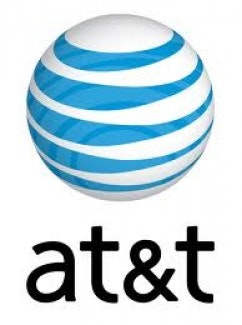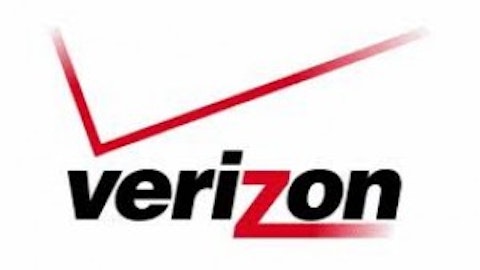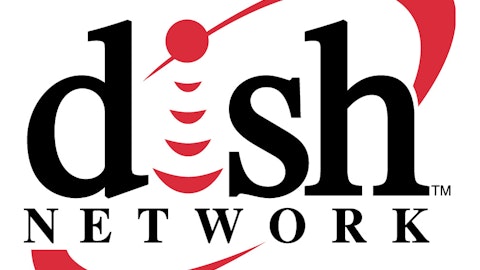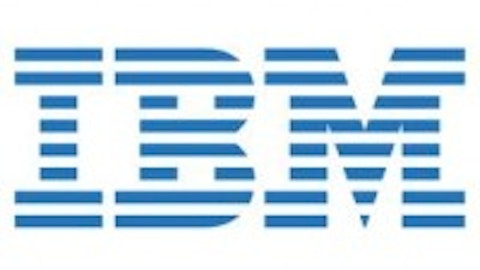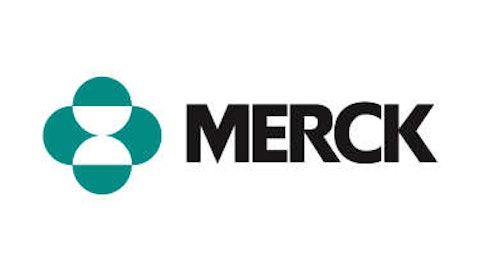I know what you’re thinking. AT&T Inc. (NYSE:T) is definitely not cheap at well over 25 times earnings. I would certainly disagree, however, and I also think that the company has a lot of other things going for it that make its shares look attractive at current levels. Let me further explain.
First of all, valuations…
| P/E | Forward P/E | Dividend (Yield) | Payout Ratio | |
|---|---|---|---|---|
| T | 26.66 | 12.81 | $1.80 (5.22%) | 139% |
| VZ | 124.11 | 15.33 | $2.06 (4.00%) | 515% |
While the first thing I will point out is that AT&T Inc. (NYSE:T) is way cheaper in relation to earnings than its competitor Verizon Communications Inc. (NYSE:VZ), you may point out the absurdly high P/E ratios and the unsustainable payout ratios for both companies. Here’s why none of this may matter going forward.
Both companies took massive hits to their earnings after being smacked by one-time items caused by a double whammy of pesky pension problems and damage done by Hurricane Sandy. Looking at earnings estimates going forward (which give us a more normalized view) we can see that the forward P/E ratio looks fair for Verizon Communications Inc. (NYSE:VZ), with AT&T Inc. (NYSE:T) actually looking a little cheap at a under 13 times forward earnings. Payout ratios also look more than sustainable with forward earnings in mind as well.
Another thing to keep in mind before absorbing all the doom-and-gloom surrounding these wireless companies is the fact that both generate massive amounts of free cash flow as well, which adds to their strength:

To sum it up, while nothing is guaranteed, the darker days for both companies may be behind them.
And then there are the benefits of being a near duopoly…
In the United States, Verizon Communications Inc. (NYSE:VZ) and AT&T serve 65% ofmobile subscribers. Since 2009, while Sprint Nextel Corporation (NYSE:S) has lost 5 million subscribers, Verizon has added 15 million and AT&T Inc. (NYSE:T) has added 8 million. With big market share comes big power–especially when you need to better your bottom line.
Apparently the nation’s two largest wireless carriers are looking to alleviate the pressure on earnings by silently shifting it onto the shoulders of consumers. After recently experiencing a 60% year-over-year decrease in new connections, both companies seem to see new fees as the savior to increasing profits.
AT&T recently began charging a $0.61 “Mobility Administrative Fee” for instance, which according to the Huffington Post, will add up to an additional $775 million annually. The company, along with competitor Verizon, also increased its upgrade fees last year as well. With a duopoly in place and other competitors not even close to the size and scope of Verizon and AT&T Inc. (NYSE:T), both companies can get away with fees and increases–for now. This adds to their pricing power and ability to remain profitable.
So what does AT&T have going for it that Verizon does not?
Besides a cheaper price relative to forward earnings and a much higher dividend, AT&T has other attributes that separate it from the only other competitor that comes close to it in size. One of these other advantages is its relationship with America Movil SAB de CV (ADR) (NYSE:AMX).
AT&T owns and maintains a 9% stake in the Mexican telecommunications company, even after recently selling off a chunk of shares and raising $564 million from the proceeds. AT&T clarified the selling of shares in an email to Bloomberg, explaining that:
“From time to time we rebalance our asset levels and raise cash for general corporate purposes… We’ve historically owned about 9 percent of AMX. As a result of AMX’s recent share repurchases and our sales, we will again hold an approximate 9 percent interest in AMX.”
Carlos Slim, often touted as the world’s richest man, is the largest stakeholder in the company, holding roughly 30%, and in 1990 AT&T (then known as Southwestern Bell Corp.) backed Slim in a privatization purchase of the state-owned company. The stake in America Movil is a very valuable asset for AT&T Inc. (NYSE:T), as can be seen with the half-billion cash injection that it recently provided the company.
America Movil SAB de CV (ADR) (NYSE:AMX) has operations in 18 countries in the Americas, and gives AT&T exposure to the growing South American economies. America Movil SAB de CV (ADR) (NYSE:AMX) is also heavily invested in lucrative wireless, which should continue to provide solid profits and growth:

Source: America Movil investor relations
The company also recently saw a quarterly year-over-year increase of an additional $17 million wireless subscribers. America Movil also has aspirations of further expanding into Europe that are becoming reality.
The bottom line
Shares of AT&T Inc. (NYSE:T) look attractive at current levels. The company has strong pricing power and is situated in a duopolistic environment with high barriers of entry. With the mobile revolution in full force, wireless and data usage will continue to be in high demand, with AT&T and Verizon being the main benefactors.
Both carriers are also in the process of rolling out 4G next generation technology, which will attract new customers. While this is highly capital intensive and even a drag on earnings now, it should bolster the bottom line significantly later.
While Verizon seems to be growing faster, AT&T is cheaper in relation to forward earnings and also yields over 5%–as opposed to Verizon’s yield of about 4%. An extra percentage point can make quite a difference over the long-term. AT&T also has a good sized stake in the growing and lucrative America Movil, which gives it another edge over Verizon.
Starting a position in AT&T Inc. (NYSE:T) now looks like a good idea– especially due to its cheap valuations and improving fundamentals and growing opportunities, as well as its ability to generate massive amounts of free cash flow.
The article AT&T Is Starting to Look Cheap originally appeared on Fool.com and is written by Joseph Harry.
Joseph Harry owns shares of AT&T.; The Motley Fool has no position in any of the stocks mentioned. Joseph is a member of The Motley Fool Blog Network — entries represent the personal opinion of the blogger and are not formally edited.
Copyright © 1995 – 2013 The Motley Fool, LLC. All rights reserved. The Motley Fool has a disclosure policy.
